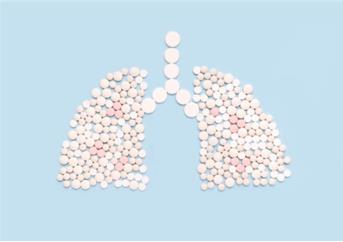Tuberculosis (TB)

Tuberculosis (TB) is an infectious disease which spreads mainly through the lungs and is caused by specific microorganisms. It spreads in the air as an infected person coughs, sneezes, or spits. We are ready to assist you with your therapy and vaccine development projects in Tuberculosis.
Introduction to Tuberculosis
TB is an acronym for Tuberculosis which is caused by certain strains of mycobacteria in the Mycobacterium tuberculosis complex. Tuberculosis is one of the oldest human diseases and continues to be a global concern. TB was the second fatal infectious disease after COVID in 2022. The world estimate of incidence for TB is approximately 133 cases for every 100,000 people a year. In this period, more than 10.6 million new cases were reported along with 1.6 million deaths.
 Fig. 1 Shows an estimated number of incident TB cases and TB deaths (in millions) from 2000 to 2017. (Natarajan, A., et al., 2020)
Fig. 1 Shows an estimated number of incident TB cases and TB deaths (in millions) from 2000 to 2017. (Natarajan, A., et al., 2020)Pathogenesis of Tuberculosis
The causes of tuberculosis or TB begins with the inhalation of Mycobacterium tuberculosis which leads to macrophages or phagocytes in the lungs. The bacteria reside within the single celled immune response which is a macrophage in a dormant form. The bacteria survive the destruction of phagosome by blocking their fusion with lysosome and inducing death of Alveolar Macrophages by secreting ESAT-6. This results in local tissue necrosis, promotes recruitment of extra immune response cells and enables further movement of the pathogen into lymph nodes and possibly systemic circulation.
 Fig. 2 Ciclo infectivo de M. tuberculosis. (Cardona, P.J., 2018)
Fig. 2 Ciclo infectivo de M. tuberculosis. (Cardona, P.J., 2018) Molecular Diagnosis Development of Tuberculosis
Polymerase Chain Reaction (PCR)
The use of PCR in the diagnosis of tuberculosis is its utmost forte. Molecular biology enthusiasts are able to detect MTB in sputum samples, even when the number of bacteria present is low. It is possible to diagnose the infection in its early stages through the use of polymerase chain reaction (PCR) as it has the ability to detect specific recombinant DNA antibodies.
Line Probe Assay (LPA)
LPA makes it possible to find PCR product amplification, together with MTB, and also pinpoint drug resistance mutations within the sample. It is recommended by WHO for the detection of rifampicin and isoniazid resistance as well.
Whole Genome Sequencing (WGS)
Under the umbrella of next generation sequencing, WGS stands for whole gene amplification. This novel technology has elevated the process of determining which microorganism is present in a sample tremendously. In addition to other methods, WGS can also identify all relevant mutations and give functional categorization, which are its additional benefits.
Vaccine Development of Tuberculosis
Prevention or delay in the activation of dormant tuberculosis to an active state is possible through the deployment of these vaccines. The therapeutic TB vaccines act as immunotherapeutic adjuncts to chemotherapy by building the host's immunity towards TB. These vaccines serve to improve therapeutic for individuals suffering from active diseases or boost the recovery process afterwards.

Prevention or delay in the activation of dormant tuberculosis to an active state is possible through the deployment of these vaccines. The therapeutic TB vaccines act as immunotherapeutic adjuncts to chemotherapy by building the host's immunity towards TB. These vaccines serve to improve therapeutic for individuals suffering from active diseases or boost the recovery process afterwards.
Fig. 3 Overview of selected therapeutic TB vaccines in the clinical pipeline. (Bouzeyen, R. and Javid, B., 2022)
Our Services
Our firm maintains a collaborative approach working hand in hand with clients to devise innovative and effective therapy solutions for Tuberculosis. We provide assistance during all steps of the development process ensuring that the solutions are effective and suitable.
Platforms of Tuberculosis Therapy Development

Animal Models for Tuberculosis
We have developed extensive experience in developing and using animal models that accurately reproduce the disease pathophysiology and the therapeutic responses of Tuberculosis. These models allow us to test the accuracy of the expected safety and efficacy of the new therapeutics with a high degree of confidence.
| Mouse Models | Advantages | Disadvantages |
|---|---|---|
| Inbred "resistant" (C57BL/6, Balb/c) | Consistent results, use of gene knock-out mice, extended studies, kinetics, indicators of protection, and immunological resources. | Absence of human-like pathology (e.g., liquefaction, fibrosis) and relevant Mtb-induced cell types. |
| Inbred "susceptible" (C3HeB/FeJ, 129Sv, I/St, DBA/2) | Study of pathology, necrotic granulomas, susceptibility markers, and drug testing. | Few knock-out mice are available, and there is no model for the chronic or latent stages of the disease. |
| Outbred | Genetic variability, microbiome diversity. | Housing inbred and pathogen-free mice is challenging, affecting reproducibility |
| Collaborative cross (CC) lines | Genetic diversity and gene association studies. | Low reproducibility, costly, and resource-intensive. |
| Humanized mouse | Representation of human-specific cell types or effector functions. | Costly, variable, technology-intensive, and highly sensitive to attenuated strains. |
In addition, we offer a range of comprehensive animal model services that concentrate on specific signaling pathways and molecular targets.
If you are interested in our services, please contact us as soon as possible for more information.
References
- Natarajan, A., et al., "A systemic review on tuberculosis." Indian J Tuberc, (2020). 67(3): p. 295-311.
- Cardona, P.J., "Pathogenesis of tuberculosis and other mycobacteriosis." Enferm Infecc Microbiol Clin (Engl Ed), (2018). 36(1): p. 38-46.
- Bouzeyen, R. and Javid, B., "Therapeutic Vaccines for Tuberculosis: An Overview." Front Immunol, (2022). 13: p. 878471.
All of our services and products are intended for preclinical research use only and cannot be used to diagnose, treat or manage patients.
